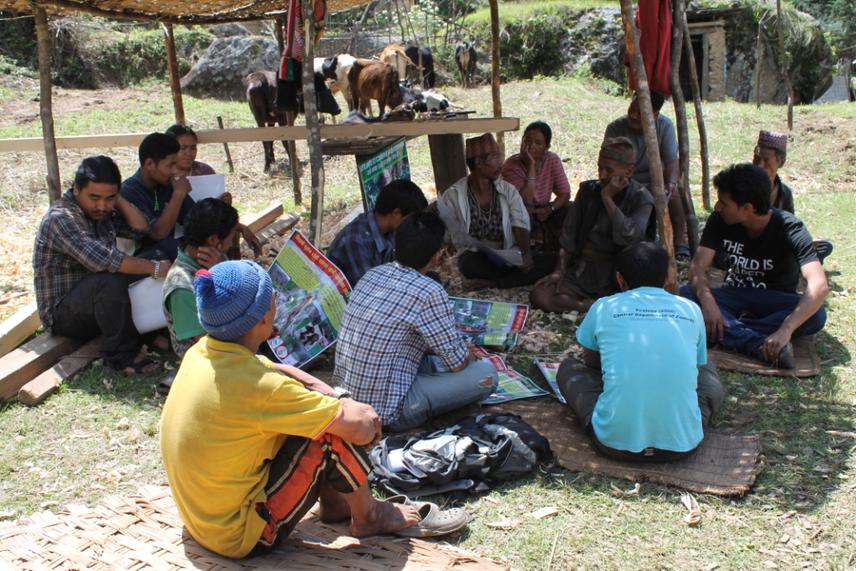Arjun Thapa
Other projects
15 Dec 2014
Strengthening Community Participatory Red Panda Conservation and Monitoring Program in Gaurishankar Conservation Area, Central Nepal
This initiative red panda project will aims to explore the existence of red panda, its distribution, habitat status, threats as well as raise the awareness and capacity building of local’s on conservation in Gaurishankar Conservation Area.

Interaction with local community.
Red panda (Ailurus fulgens) is a vulnerable species (IUCN 2008), which is legally protected through its range countries. It occurs in an isolated mountain’s bamboo- forest patches in Nepal along India, Bhutan, China and Myanmar. Literatures confirmed eight mountainous protected areas as suitable red panda habitat in the country, which approximately harbour about 1.9% of its entire global population. An estimation based on the habitat suitability index suggested 314 red pandas in Nepal (Yonzon,1989). Nepal’s high priority in biodiversity conservation is reflected in the increasing number of protected areas and their coverage, which is more than 20% of the total area of the country. In fact, such creation process plays significant role in biodiversity, results in protection of endangered and rare species conservation. Nepalese PAs cover approximately 20% of the total red panda habitat, where more than 62% of the red panda potential habitat remains outside PAs and which may be at higher risk because of pressures from anthropogenic activities (Yonzon et al., 1997).To protect the red panda and its habitat effectively, basic information regarding its distribution, abundance, habitat status, threats issues are essential. Recently, Government of Nepal proclaimed Gaurishankar Conservation Area (GCA) that appended a protected area in Sacred Himalayan Landscape (SHL), where information about this target species is scant.
Major objectives of the proposed study will assess presence/absence status, distribution, habitat characteristic, threats and raise awareness and capacity of local stakeholder for red panda conservation. This project will base on both scientific field survey and communities level activities. To address the objectives, transects, quadrat sampling, questionnaires survey, interviews, focus group discussion and conservation outreach activities will be applied in randomly selected potential red panda habitat areas. It will provide baseline information on red panda in GCA, with the initiation of community participation in red panda conservation. Inputs of this project will useful for Department of National Park and Wildlife Conservation, National Trust for Nature Conservation (NTNC) and WWF-Nepal along with other conservation concern local/national/international organizations for lunching species orientated conservation activities.